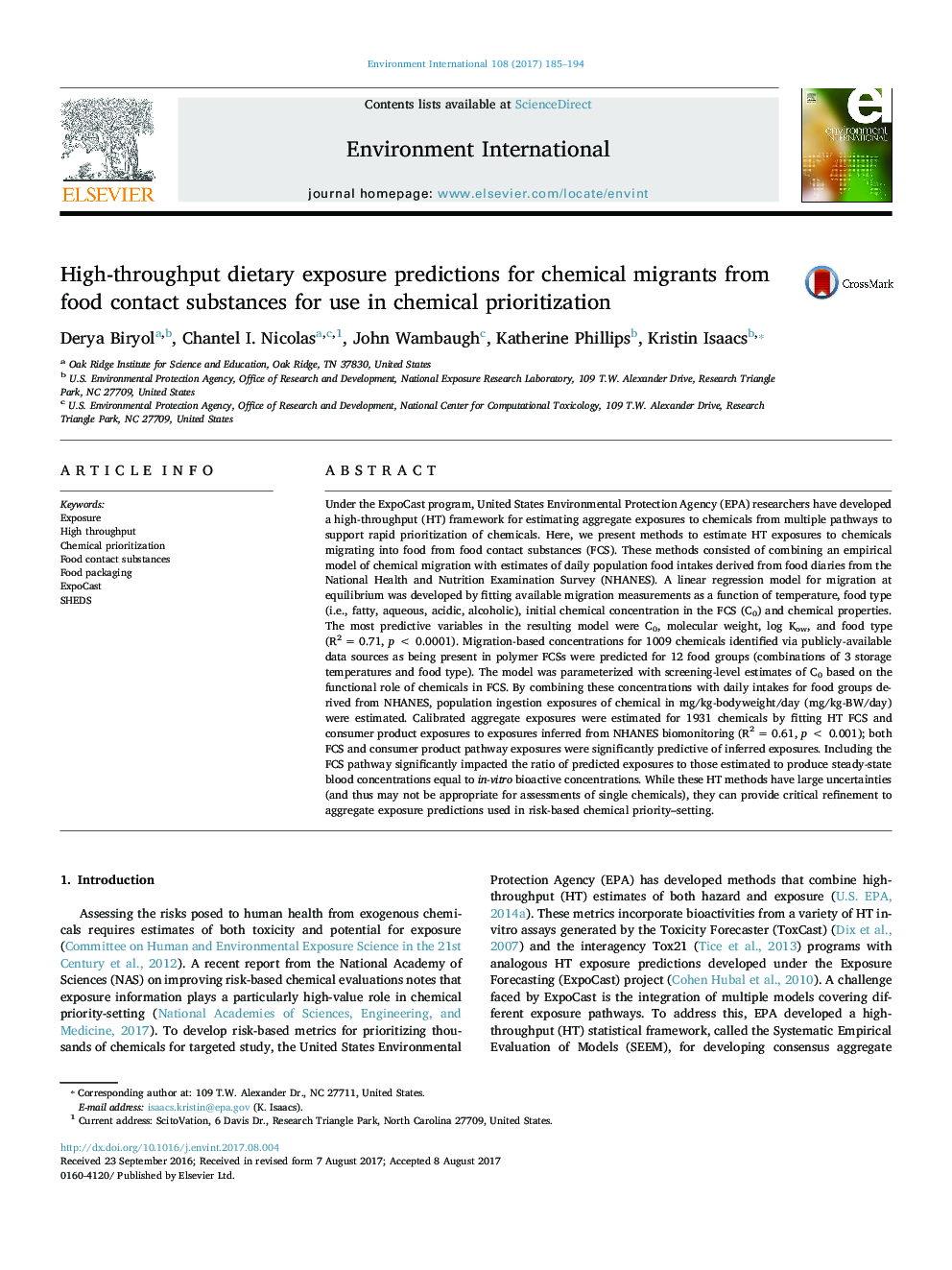| کد مقاله | کد نشریه | سال انتشار | مقاله انگلیسی | نسخه تمام متن |
|---|---|---|---|---|
| 5748206 | 1619022 | 2017 | 10 صفحه PDF | دانلود رایگان |
عنوان انگلیسی مقاله ISI
High-throughput dietary exposure predictions for chemical migrants from food contact substances for use in chemical prioritization
ترجمه فارسی عنوان
پیش بینی های مواجهه با راندمان بالا برای مهاجران شیمیایی از مواد تماس با مواد غذایی برای استفاده در اولویت بندی مواد شیمیایی
دانلود مقاله + سفارش ترجمه
دانلود مقاله ISI انگلیسی
رایگان برای ایرانیان
کلمات کلیدی
موضوعات مرتبط
علوم زیستی و بیوفناوری
علوم محیط زیست
شیمی زیست محیطی
چکیده انگلیسی
Under the ExpoCast program, United States Environmental Protection Agency (EPA) researchers have developed a high-throughput (HT) framework for estimating aggregate exposures to chemicals from multiple pathways to support rapid prioritization of chemicals. Here, we present methods to estimate HT exposures to chemicals migrating into food from food contact substances (FCS). These methods consisted of combining an empirical model of chemical migration with estimates of daily population food intakes derived from food diaries from the National Health and Nutrition Examination Survey (NHANES). A linear regression model for migration at equilibrium was developed by fitting available migration measurements as a function of temperature, food type (i.e., fatty, aqueous, acidic, alcoholic), initial chemical concentration in the FCS (C0) and chemical properties. The most predictive variables in the resulting model were C0, molecular weight, log Kow, and food type (R2 = 0.71, p < 0.0001). Migration-based concentrations for 1009 chemicals identified via publicly-available data sources as being present in polymer FCSs were predicted for 12 food groups (combinations of 3 storage temperatures and food type). The model was parameterized with screening-level estimates of C0 based on the functional role of chemicals in FCS. By combining these concentrations with daily intakes for food groups derived from NHANES, population ingestion exposures of chemical in mg/kg-bodyweight/day (mg/kg-BW/day) were estimated. Calibrated aggregate exposures were estimated for 1931 chemicals by fitting HT FCS and consumer product exposures to exposures inferred from NHANES biomonitoring (R2 = 0.61, p < 0.001); both FCS and consumer product pathway exposures were significantly predictive of inferred exposures. Including the FCS pathway significantly impacted the ratio of predicted exposures to those estimated to produce steady-state blood concentrations equal to in-vitro bioactive concentrations. While these HT methods have large uncertainties (and thus may not be appropriate for assessments of single chemicals), they can provide critical refinement to aggregate exposure predictions used in risk-based chemical priority-setting.
ناشر
Database: Elsevier - ScienceDirect (ساینس دایرکت)
Journal: Environment International - Volume 108, November 2017, Pages 185-194
Journal: Environment International - Volume 108, November 2017, Pages 185-194
نویسندگان
Derya Biryol, Chantel I. Nicolas, John Wambaugh, Katherine Phillips, Kristin Isaacs,
